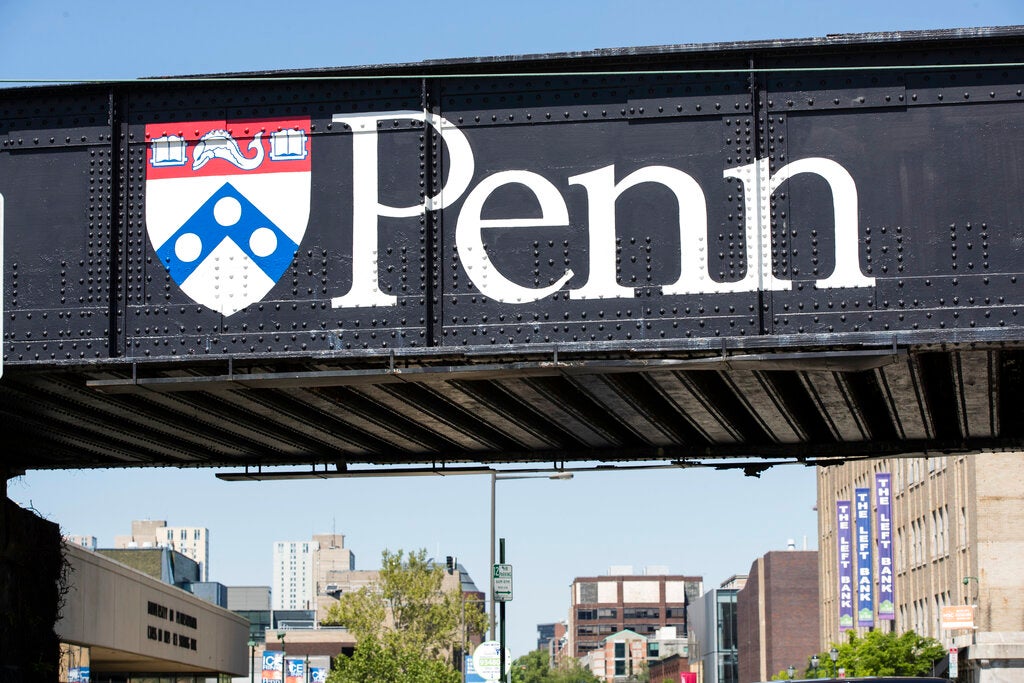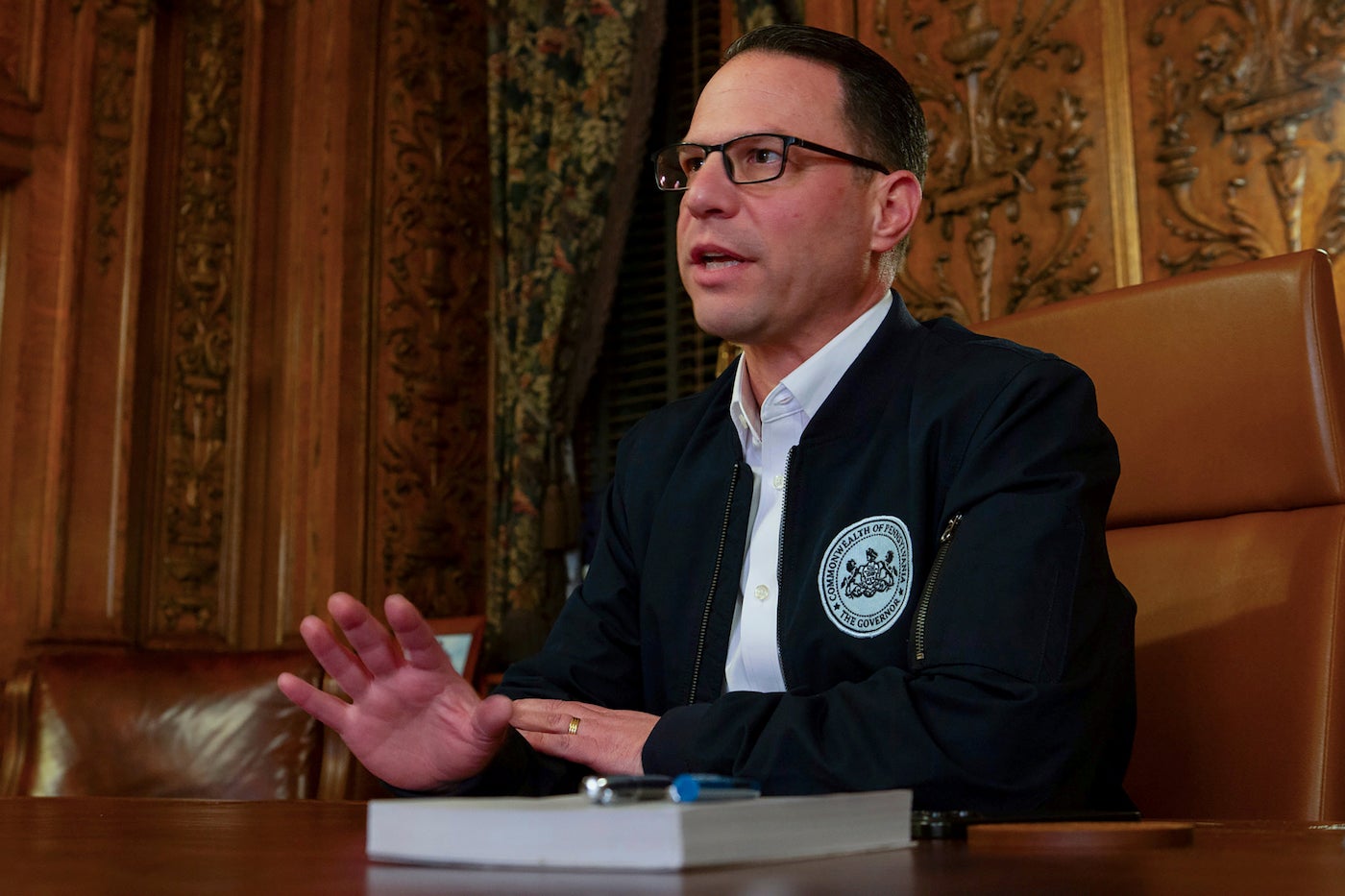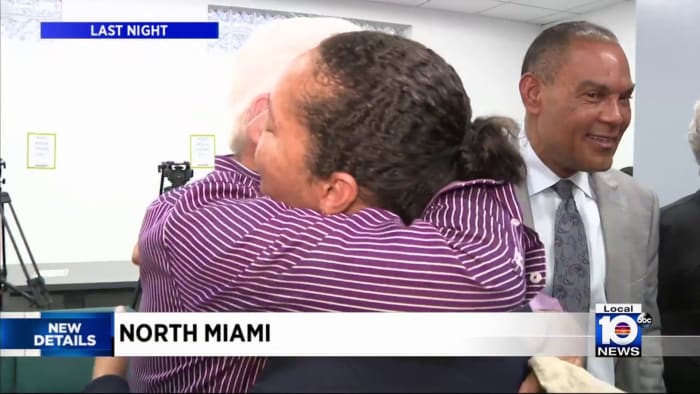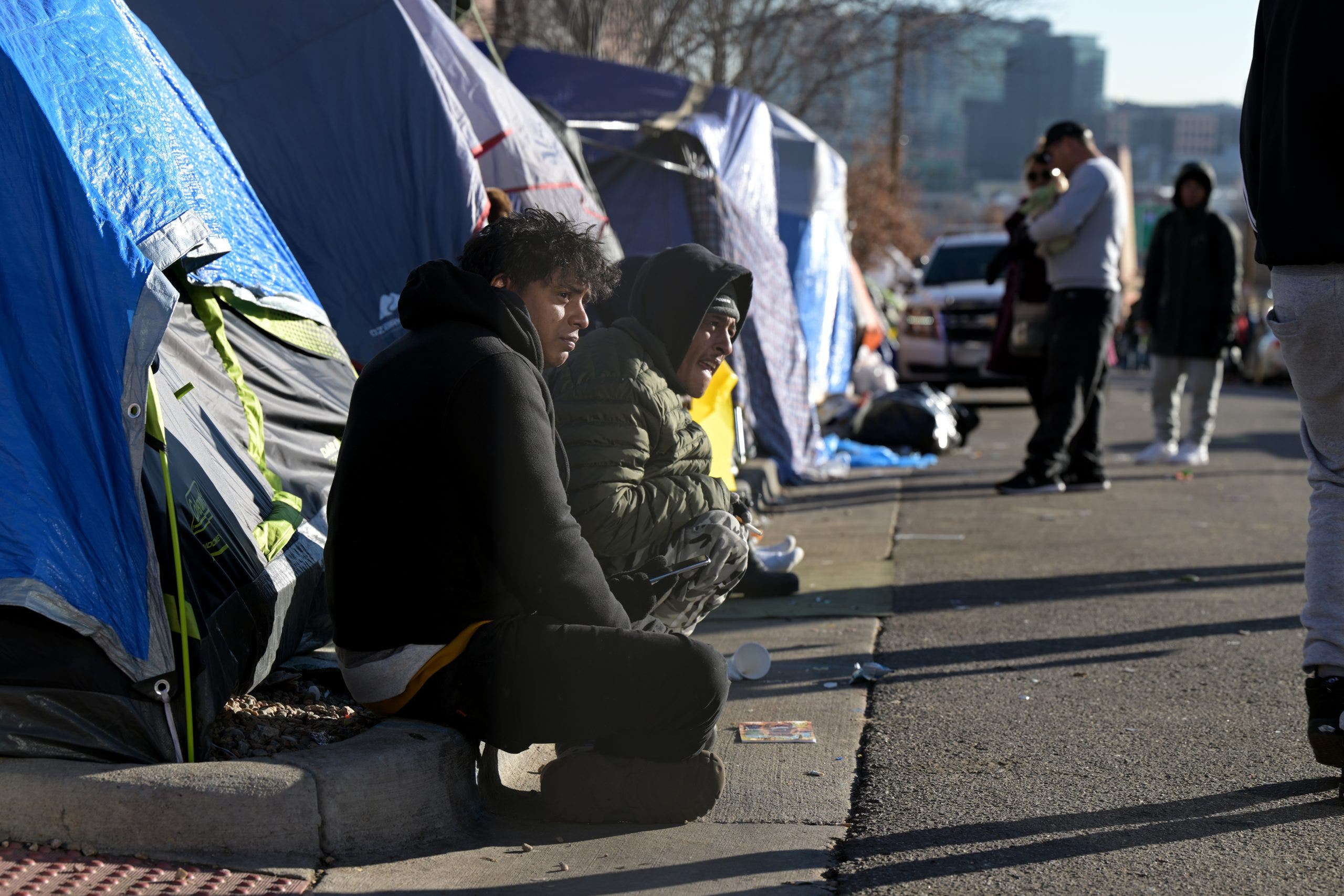Pennsylvania
This Route 78 project will cause delays at the N.J.-Pennsylvania border over the next year

Drivers using the Delaware River Joint Toll Bridge Commission’s Route 78 bridge between New Jersey and Pennsylvania are in for some closed lanes during two overnight periods this week that is a prelude to a bigger construction project.
Parts of the Route 78 toll bridge approach roadway segments in New Jersey and Pennsylvania will be closed during between Thursday night into Friday morning.
Between 8 p.m. Thursday, April 25, to 5 a.m. Friday, April. 26, the Route 78 east center and right lanes will be closed for pothole repairs from the Morgan Hill Road/Route 78 interchange (Exit 75) in Pennsylvania to the routes 22 and 173/Route 78 interchange(Exit 3) in New Jersey. One lane will remain open.
Between 10 p.m. Thursday, April 25, to 7 a.m. Friday, April 26, the Route 78 west center and right lanes will be closed for pothole repairs from the routes 22 and 173/Route 78 Exit 3 interchange in New Jersey to the Route 78 bridge at the Delaware River. One lane will be open.
These closed lanes are the first part of a year-long, $23 million Route 78 New Jersey Roadway Rehabilitation and Power and Communications-Infrastructure Improvements Project being done by the Crisdel Group, Inc. of South Plainfield.
That New Jersey segment was rehabilitated between 2007 and 2009 and is deteriorating, despite a series of stop-gap asphalt joint replacements and pothole repair projects over the past five years, officials said.
The project involves milling the old pavement off they highway and repaving work, including the three commission owned ramps at Exit 3. Highway shoulders will be resurfaced and have rumble strips installed. The highway lanes will be re-striped and Route 78 Toll Bridge’s concrete road deck and 14 other Commission-owned approach bridges in Pennsylvania and New Jersey will be sealed, officials said.
The project also includes upgrading the Commission’s security camera network on the Route 78 bridge and the commission’s Route 78 approach 4.2-mile highway segment in New Jersey and 2.25-mile section in Pennsylvania.
Drivers should anticipate minor slowdowns and backups and reduce speeds in active construction zones or restricted travel areas.
Our journalism needs your support. Please subscribe today to NJ.com.
Larry Higgs may be reached at lhiggs@njadvancemedia.com. Follow him on X @CommutingLarry

Pennsylvania
Stuck between high fees and low wages, how much money will it take to fix PA child care staffing crisis?

Diane Barber, executive director of the Pennsylvania Child Care Association, called the expanded tax credit “a wonderful thing for families.” But she and other child care advocates and experts said it doesn’t fix the staffing issues providers face.
“While we can reduce the costs for families, it only helps if they can actually find some place for their children to go,” Barber told Spotlight PA.
What the governor is proposing
State funding for two major child care line items has already increased, partially making up for a decline in federal revenue, according to a March report from the state’s Independent Fiscal Office. But overall funding is still down from the height it reached during the pandemic.
And the report noted uncertainties remain for the industry, including whether providers can maintain the wages they increased during the pandemic.
Shapiro’s administration has highlighted how one relatively small increase in his budget proposal — $96,000 in state funds — would allow the state to leverage $62 million in federal funds to increase reimbursement rates for providers in the state’s subsidized child care program. The new rates would be at a federally recommended benchmark, the administration has said.
“We’re very hopeful that this is something that is included in the final budget,” Secretary of Human Services Valerie Arkoosh said during a state Senate budget hearing in March. “It will be extremely important to these child care providers. It will allow them to increase salaries if they wish. It will put more money in their budgets and money they can count on.”
But child care advocates say the proposed higher rates aren’t enough. Barber of the Pennsylvania Child Care Association told Spotlight PA the money for higher reimbursement rates will help providers keep their “lights on, but it’s not going to be able to empower programs to increase staff salaries substantially or to provide benefits.”
The administration has declined to say whether it supports the $284 million proposal from advocates. Department of Human Services spokesperson Brandon Cwalina told Spotlight PA the administration is “happy to work with the General Assembly to review and consider specific proposals that invest in child care.”
But he said the administration anticipates raising reimbursement rates “will create a more stable business environment for child care providers and ensure equal access to child care services,” and that both reimbursement rates and child care worker pay have increased in recent years.
Child care workers would also benefit from the governor’s proposed minimum wage increase to $15 an hour, Arkoosh told lawmakers. And she said the budget plan includes additional funding to help child care providers reach that level should lawmakers raise the minimum wage.
Representatives for the party caucuses in the state legislature expressed support for child care. But they did not commit to a specific funding level.
Stefano, of the Early Childhood Education Caucus, said he wants to see more investment in child care and early education beyond what the governor has proposed. But he said there are unknowns, including how much money lawmakers will decide to spend on K-12 education.
Another co-chair of the caucus, state Sen. Judy Schwank (D., Berks), said she supports the $284 million proposal from advocates.
“Will we get all of it? I’m not so sure,” Schwank told Spotlight PA. “But I’d sure like to see something.”
So would Zelinsky at the Doodle Bug.
“If there was something that would take a little bit of stress off of me, it would be different because I can’t imagine my life doing anything else,” she said. “I would take every one of these kids home with me. That’s what makes me stay.”
Spotlight PA is an independent, nonpartisan, and nonprofit newsroom producing investigative and public-service journalism that holds the powerful to account and drives positive change in Pennsylvania.
Pennsylvania
Penn grad workers say ‘we’re part of a national movement’ after union win

The Graduate Employees Together University of Pennsylvania, or GET-UP, is behind the drive to affiliate with the United Auto Workers, which often represents student worker unions.
The union election was scheduled for mid-April but was delayed after the University of Pennsylvania tried to exclude several hundred student workers through the National Labor Relations Board appeal process, but the university failed.
There are about 4,000 eligible graduate student worker voters. There were 1,807 workers who voted in favor of the union, 97 voted against it and there were 417 challenged ballots.
The ultimate size of the union will likely be several thousand workers, but the exact number is expected to fluctuate depending on when student workers graduate or their appointments end.
The university is waiting for official certification of the results by the National Labor Relations Board but recognizes the union election’s unofficial results.
“At Penn, we engage as a community to advance what is important to us all — a dynamic and supportive academic environment,” said Ron Ozio, a spokesperson for the University of Pennsylvania, in a statement. “We look forward to working with representatives from the UAW to continue this important mission for Penn’s graduate and professional students.”
Graduate students at the University of Pennsylvania earn a minimum stipend of $38,000 during the academic year. The biggest increase happened in the past year, when the minimum stipend increased by $8,000.
The university estimates the value of its funding packages for Ph.D. students, which include scholarships to cover tuition and fees, stipends, medical insurance and gym memberships, is $88,244.
Graduate students typically spend about six years working towards their Ph.D. degrees, which means there’ll be turnover in union members.
Dozens of student workers have already graduated in the past four years, but organizers say there’s more behind them ready to step up.
“We’re always bringing in new worker organizers who are in their first or second year. It’s really important for the long-term health of the union at Penn to do that,” Schirvar said.
Nationwide, colleges rely more on graduate student worker labor, said Celine McNicholas, director of policy at the Economic Policy Institute, a non-partisan think tank in Washington D.C.
“Universities have increasingly shifted teaching duties away from those 10-year-track faculty onto graduate students, adjuncts and instructors,” McNicholas said. “That leaves a large portion of the research and teaching at some of the most prestigious universities really being done by folks who are there pursuing their own education.”
There were two previous unionization efforts by GET-UP at the University of Pennsylvania that were not successful.
In 2003, the first unionization effort at the University of Pennsylvania died after the National Labor Relations Board ruled against graduate student unions at private universities. At the time, the federal agency was overseen by the Bush administration.
In 2017, the National Labor Relations Board ruled that all graduate students at the University of Pennsylvania — including those in the business and engineering schools — should be eligible to vote.
By 2018, GET-UP withdrew its union petition during the Trump administration as a strategic move.
Now Trump is on the presidential ballot again this November. It’s unclear what the National Labor Relations Board under Trump may do. But in the past, it ruled against private university student worker unionization efforts. If the University of Pennsylvania and GET-UP don’t ink a contract before those changes, the union could have little recourse about a lack of bargaining in good faith.
But graduate student workers do have some leverage as the lynchpin of the university academic workforce.
“It’s not like Starbucks where you can just close the coffee shop or fire all the baristas and hire more people off the street,” said Ruth Milkman, professor of sociology and labor students at the City University of New York. “Graduate students are highly skilled and not that easily replaced. So that doesn’t mean [the university] won’t drag it out, but that they have some leverage.”
There’s been much more stress about student debt and fewer tenure track jobs waiting for graduate student workers when they graduate.
“That’s been building up for a long time but it’s getting worse,” Milkman said.
Pennsylvania
Pa. Senate approves GOP's $3B tax-cutting plan

Republicans contended that such tax cuts would improve household budgets and stoke the economy in a state that desperately needs to step up its growth and appeal to keep pace with faster-growing states.
Shapiro’s administration expects to have $14 billion in reserve by the end of June, and what to do with it has been the subject of debate in Harrisburg.
In a statement, Shapiro didn’t say whether he supports it, but did welcome a conversation about what to with the state’s surplus.
“With this proposal, Senate Republican Leaders are coming to the table and acknowledging that we must invest in Pennsylvania’s future,” his office said.
Democrats sought to attach tax breaks for the lowest earners — rejected by Republicans — and criticized the bill as lacking transparency, having emerged barely 24 hours before the vote.
They also said it lacks any help for public schools, considering last year’s court decision that found Pennsylvania’s system of funding public schools violates the constitutional rights of students in poorer districts.
Sen. Sharif Street, a Democrat from Philadelphia, said that attracting companies and new residents is about more than tax rates. People want a good quality of life, like good public schools and safe communities, and cutting taxes doesn’t help Pennsylvania improve its poor track record on funding schools and public safety, Street said.
“It will not attract growth to Pennsylvania, it will not attract jobs and it is a failed strategy,” Street said during floor debate.
The Senate GOP’s tax legislation would reduce the personal income tax rate from 3.07% back to the 2.8% level where it was before lawmakers in 2003 raised it to fill a deficit amid a foundering economy.
The bill also would eliminate the 4.4% gross receipts tax on the profits of private electric utilities, a tax that dates back to the 1800s and and is passed through to commercial and residential electric customers.
Shapiro’s $48.3 billion budget proposal, released in February, envisioned a $3 billion increase in spending, or about 7%, while leaning on Pennsylvania’s flush reserves to help underwrite it.
Shapiro’s plan would send billions more for underfunded public schools, public transit, services for the intellectually disabled, higher education and major industrial and high-tech projects to invigorate a slow-growing economy.
To balance, the proposal would shrink the state’s cash reserve from $14 billion to $11 billion. It has the backing of top Democratic lawmakers, but it has yet to see a vote in either chamber.
Republicans say that Shapiro’s spending plan puts the state on a path to drain the surplus within a few years and require a tax increase, given the state’s slower-growing tax collections.
The surplus began accumulating during the COVID-19 pandemic, when billions in federal aid covered some bills the state would normally pay and rising inflation pushed up tax collections on income and sales.
-

 Politics1 week ago
Politics1 week agoHouse Republicans brace for spring legislative sprint with one less GOP vote
-

 World1 week ago
World1 week agoAt least four dead in US after dozens of tornadoes rip through Oklahoma
-

 Politics1 week ago
Politics1 week agoStefanik hits special counsel Jack Smith with ethics complaint, accuses him of election meddling
-

 Politics1 week ago
Politics1 week agoAnti-Trump DA's no-show at debate leaves challenger facing off against empty podium
-

 Politics7 days ago
Politics7 days agoThe White House has a new curator. Donna Hayashi Smith is the first Asian American to hold the post
-

 News1 week ago
News1 week agoAs student protesters get arrested, they risk being banned from campus too
-

 News1 week ago
News1 week agoVideo: Police Arrest Columbia Protesters Occupying Hamilton Hall
-

 World1 week ago
World1 week agoNine on trial in Germany over alleged far-right coup plot




















